Responding to rising demand, ports of Louisiana are expanding facilities while looking to benefit in several instances from deeper channels.
Ports along the Mississippi River expect to gain from the ambitious undertaking to deepen 256 miles of the river ship channel to 50 feet, from the present 45 feet, as far as New Orleans by early 2022 and to Baton Rouge by 2024. The U.S. Army Corps of Engineers kicked off the $250 million project in September.
Generally looking from east to west, here’s the dish on ports of the Pelican State:
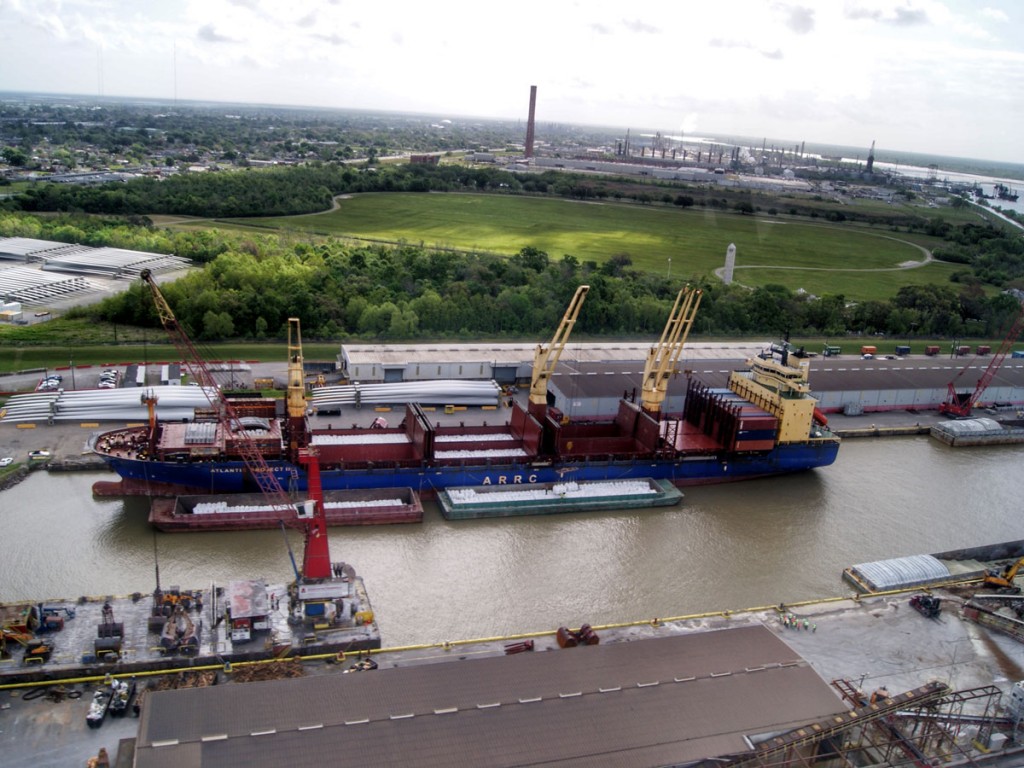
St. Bernard Port
The St. Bernard Port, Harbor & Terminal District, while expanding facilities, most notably is providing a potential home for future containerized cargo operations of the Port of New Orleans, which has seen its container volumes double over the past decade. Port NOLA in December agreed to acquire nearly 1,100 acres of St. Bernard Port property, inclusive of its Violet Terminal, and is launching a two-year study looking at phased development of $1.5 billion of facilities to augment capabilities of Port NOLA’s Napoleon Avenue Container Terminal, situated 16 miles up the Mississippi River. St. Bernard officials see an opportunity to secure additional land and develop existing properties for complementary purposes.
Meanwhile, St. Bernard Port’s two-year, $32.2 million expansion and upgrade of its venerable Chalmette Slip enters its final phase. A federal grant and state funding are each paying 40 percent of the project’s cost, with 20 percent coming from the port and terminal operator Associated Terminals.
Also at Chalmette Slip, a new 80,000-square-foot, food-grade transit shed is being built to hold finished product of ASR Group, formerly American Sugar Refining Co.
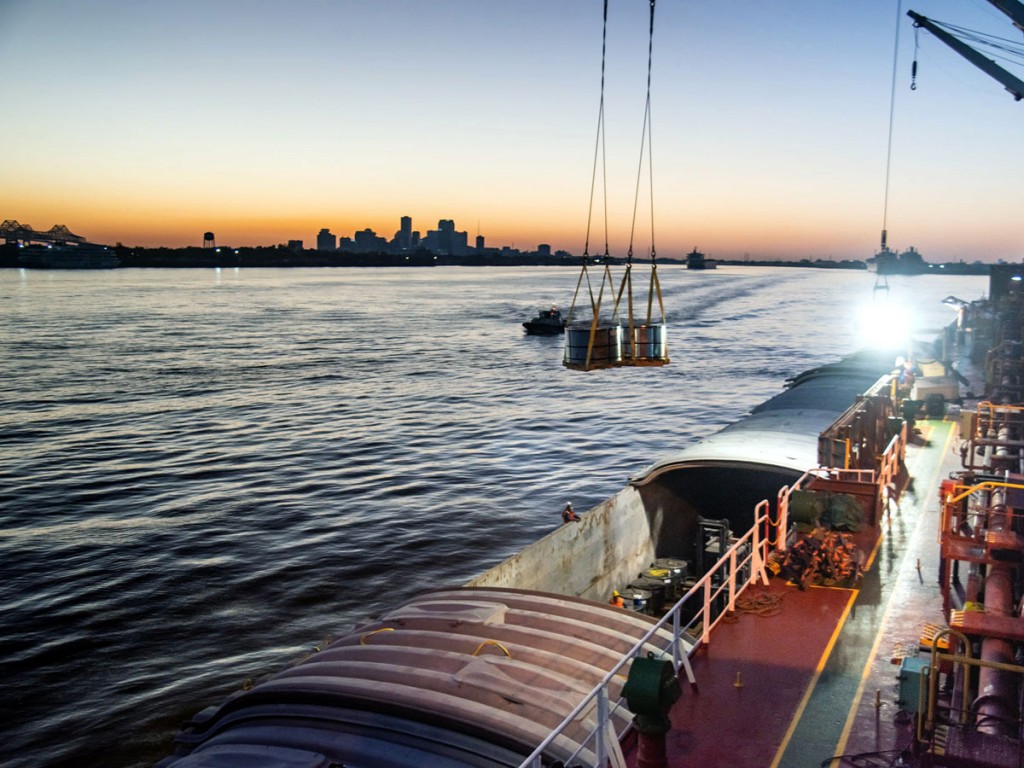
Port of New Orleans
While looking at expanding to St. Bernard Parish, the Port of New Orleans, marketed as Port NOLA, is investing more than $100 million in its present Napoleon Avenue Container Terminal, including securing four new ship-to-shore cranes for June delivery, to bring its gantry contingent to nine. The endeavor is expected to nearly double the terminal’s annual throughput capacity, to 1.5 million 20-foot-equivalent units. By a year from now, the Napoleon Avenue facility is anticipated to have a 50-foot-deep channel, compared with today’s 47 feet, thanks to advancement of Mississippi River Ship Channel deepening.
Port NOLA’s third direct Asia container service, offered by THE Alliance, is slated to launch in April, while Gulf Stream Marine began breakbulk operations at Alabo Street Wharf in October.
The port, which looks to take full advantage of its strategic Lower Mississippi River location and multimodal assets to efficiently reach the nation’s major Midwest markets, has seen a rapid rise in exports of petrochemical resins and poultry and increases in imports of coffee, food-grade resins, forest products, natural stone, nonferrous metals, apparel and various retail goods.
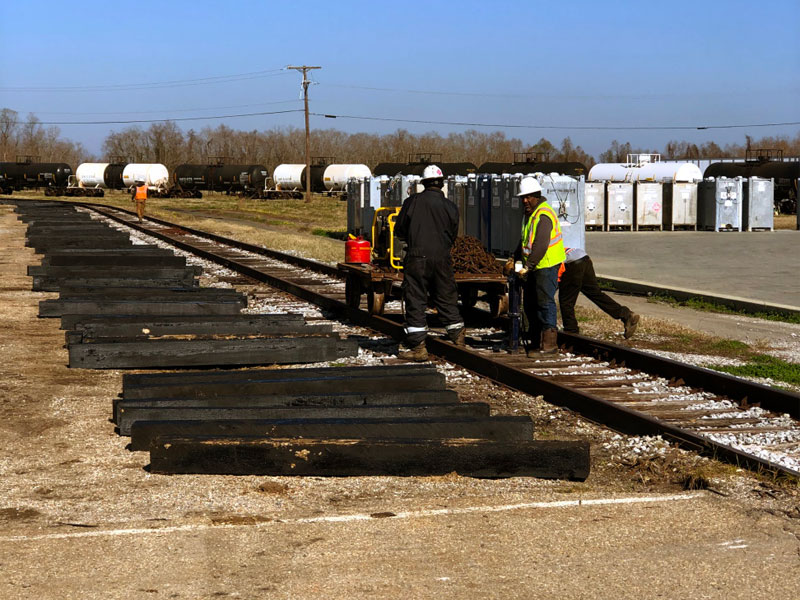
Port Manchac
On Lake Ponchartrain’s northwestern shore, northwest of New Orleans, the South Tangipahoa Parish Port Commission’s Port Manchac anticipates completion this year of a $4 million project to redevelop its 140-acre intermodal terminal. The aim is to provide a safe, efficient inland site for storing and transloading bulk, breakbulk, neobulk and containerized cargos, benefiting from barge, rail and highway trucking assets in a relatively noncongested environment.
The redeveloped facility includes a 25,000-square-foot laydown storage pad deploying innovative permeable pavers designed to handle potential future container transshipments from New Orleans and other locations along the Mississippi River. The project encompasses bulkhead, dredging, internal roadway, rail and drainage improvements, storm surge protection barrier expansion, barge dock work and further paving, drainage and safety lighting enhancements. The port is expanding railcar storage operations, utilizing 6,000 feet of storage track now in final stages of maintenance and safety upgrades.
Port Manchac officials are continuing efforts with Canadian National Railway to marketing the site, which adjoins the CN mainline and Interstate 55, to leaders of the polymer pellet and resin manufacturing industries for storage and transloading.
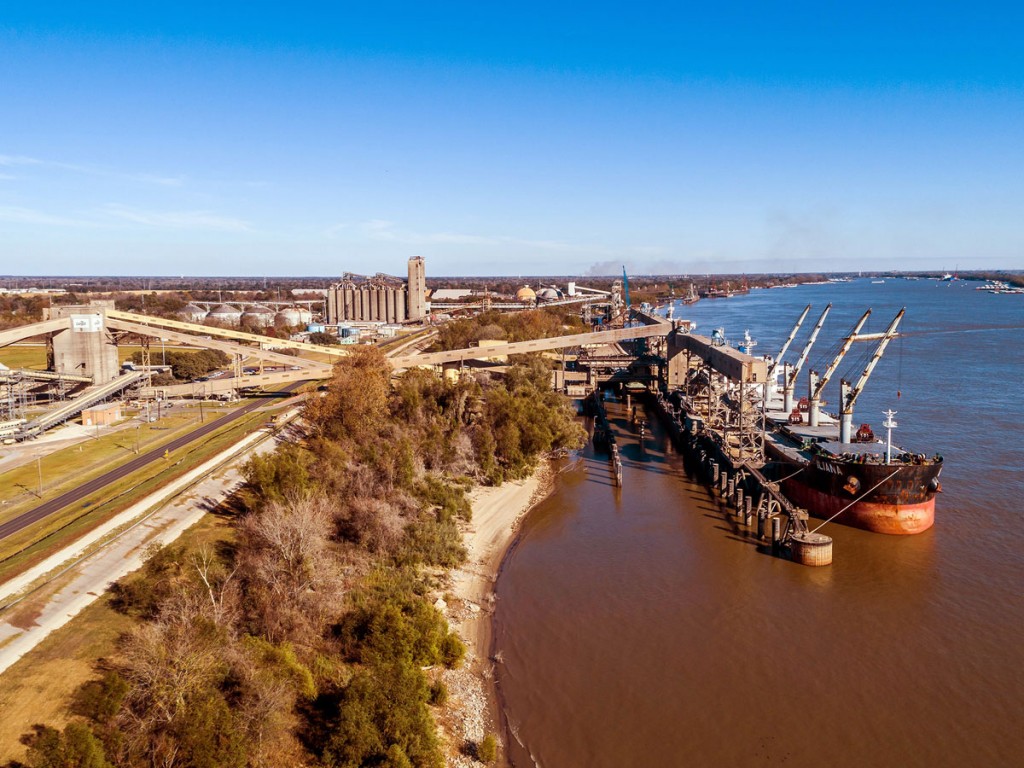
Port of South Louisiana
The Port of South Louisiana, which continues to rank No. 1 among Western Hemisphere port districts in total cargo tonnage handled, consistently moving a quarter billion short tons a year, is looking forward to September commissioning of two new Konecranes Gottwald Model 6 portal harbor cranes. The units, each with 125-ton lift capacity, were ordered last June, with 90 percent of the $12.7 million cost coming from the Louisiana Department of Transportation and Development’s port program. The versatile cranes, capable of handling containers as well as bulk materials and project cargo, are to be installed at the port’s Globalplex complex, on the east bank of the Mississippi River, in Reserve, Louisiana.
The sprawling port district, covering 54 miles along both sides of the Mississippi River between New Orleans and Baton Rouge, also is constructing a new administration building, eyeing completion by early 2022.
In addition, three road projects, to enhance access to, from and within Globalplex, are targeted for completion before the end of this year. The projects are being funded through a $1.5 million U.S. Economic Development Administration grant.
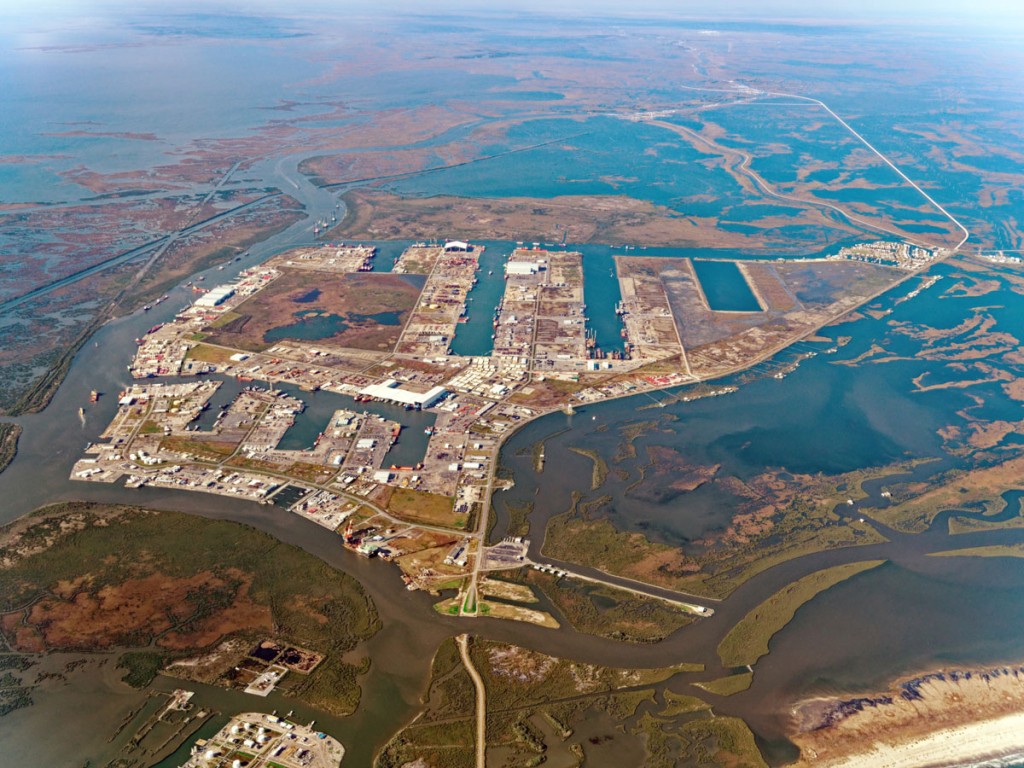
Port Fourchon
Louisiana’s southernmost port, the Greater Lafourche Port Commission’s Port Fourchon, received good news with December passage by Congress of the Water Resources Development Act of 2020. WRDA includes authorization for dredging port channels to 30 feet, which port officials see as a big step toward ultimately bringing Belle Pass channel to 50-foot draft, opening opportunities for Fourchon Island to house deepwater rig repair and refurbishment facilities.
Already a leading service hub for offshore energy production activities, Port Fourchon is investing in multiple roadway, bridge and bulkhead projects aimed at enhancing that position.
Most noteworthy, efforts to elevate Louisiana Highway 1 got a boost last June with U.S. Department of Transportation announcement of a $135 million Infrastructure for Rebuilding America, or INFRA, grant to kick-start the LA 1 improvement project. Port officials note that the estimated total cost of $445 million to complete highway elevation pales in comparison to potential multibillion-dollar harm to the nation’s gross domestic product should unelevated portions of LA 1 have to be closed, as was the case for more than 100 hours during 2020’s storm season.
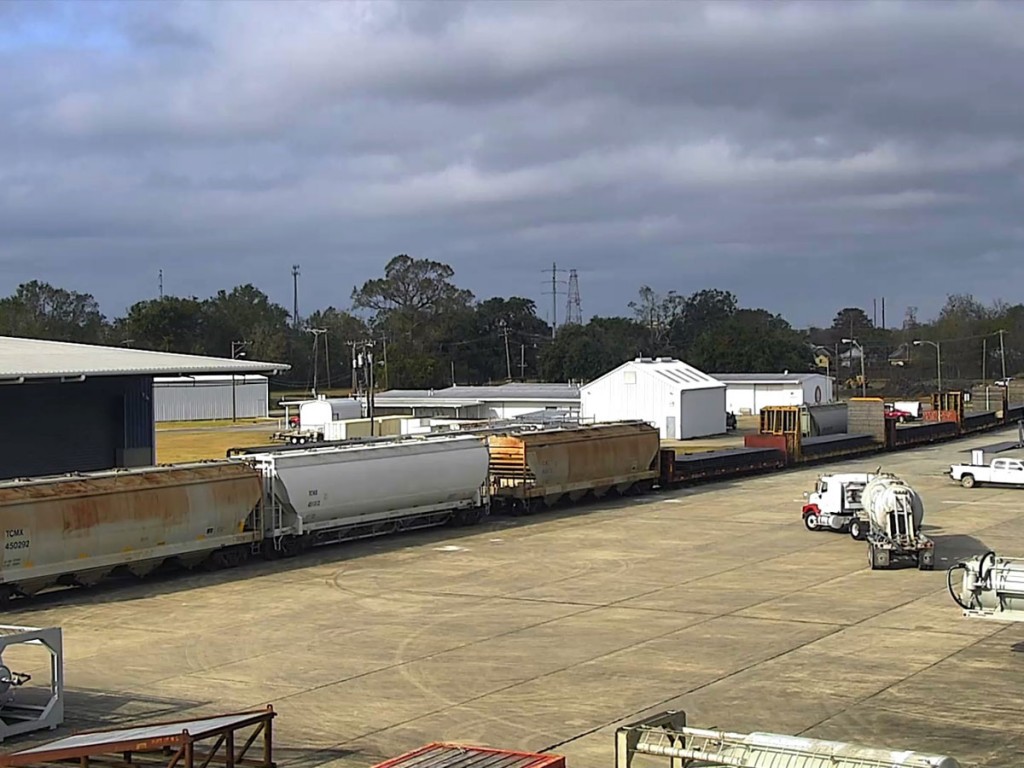
Port of Morgan City
The top priority for the Morgan City Harbor and Terminal District’s Port of Morgan City continues to be ensuring consistent provision of a navigable 20-foot-deep, 400-foot-wide channel, as sediment buildup has forced halts of import and export operations. Dredging efforts are getting a shot in the arm from $28 million in federal funding, including nearly $18.6 million announced in January, but excessive shoaling remains an ongoing concern for the port, which is located at the confluence of the Atchafalaya River and the Gulf Intracoastal Waterway.
Morgan City port officials also are focusing on economic development promotion aimed at bolstering cargo tonnage throughput and upon beneficial use of dredged materials and other environmentally oriented pursuits.
Rail activity at the Port of Morgan City is nonetheless robust, including with handling of steel shipments to meet demands of industry infrastructure projects in the region. Nearly $6 million in terminal facility improvements are proceeding at the Port of Morgan City, with rail spur repair work having been completed and East Dock expansion, to provide additional laydown space, on track to get started before midyear.
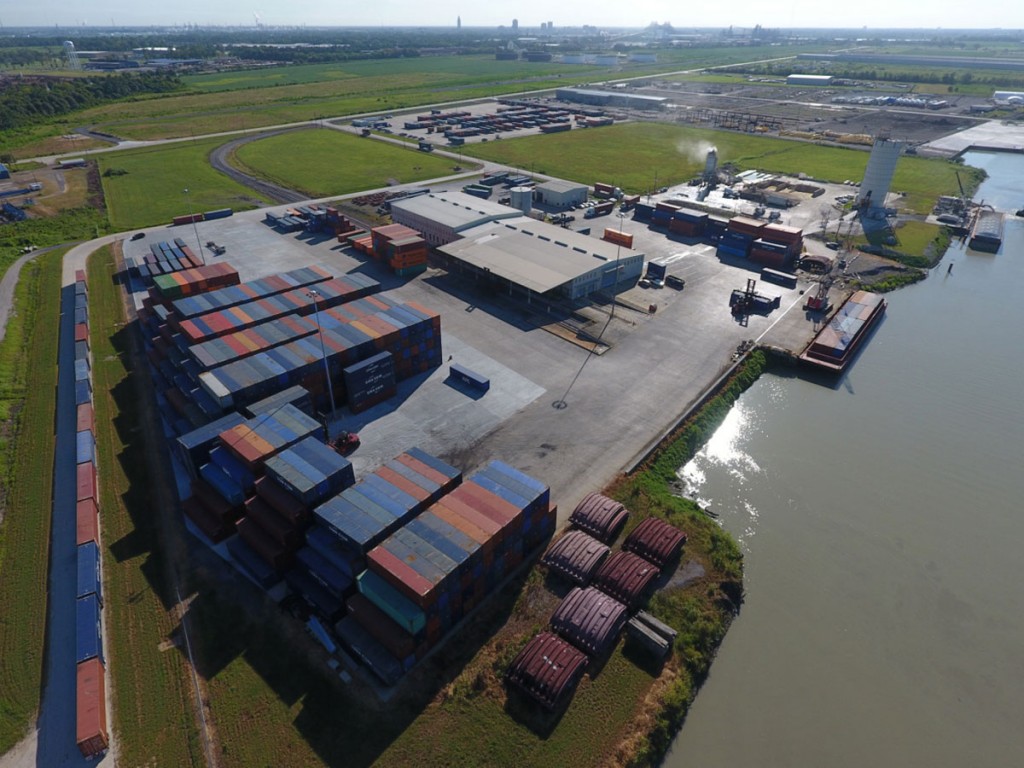
Port of Greater Baton Rouge
The successful public-private partnership between the Port of Greater Baton Rouge and Seacor AMH is producing steadily growing volumes for container-on-barge operations that began in 2016. The service takes empty barges downriver from Memphis to several Louisiana petrochemical plants, where they are loaded with containers filled with plastic pellets. The containers are then barged down the Mississippi River to New Orleans, where they are loaded onto oceangoing vessels for shipment to Europe, Asia and South America.
To accommodate growth of the container-on-barge service, the Port of Greater Baton Rouge completed in mid-2020 a $5 million, 4-acre expansion of its Inland Rivers Marine Terminal, on a canal near the intersection of the Gulf Intracoastal Waterway and Mississippi River. Louisiana Department of Transportation and Development Port Priority Program funding provided $3.4 million for the project, with the remainder coming from port coffers. The yard can now accommodate as many as 2,000 forty-foot-long containers at a time.
Most recently, the Port of Greater Baton Rouge completed in January a $22 million railcar chambering yard that is expediting exports of Drax Biomass wood pellets.
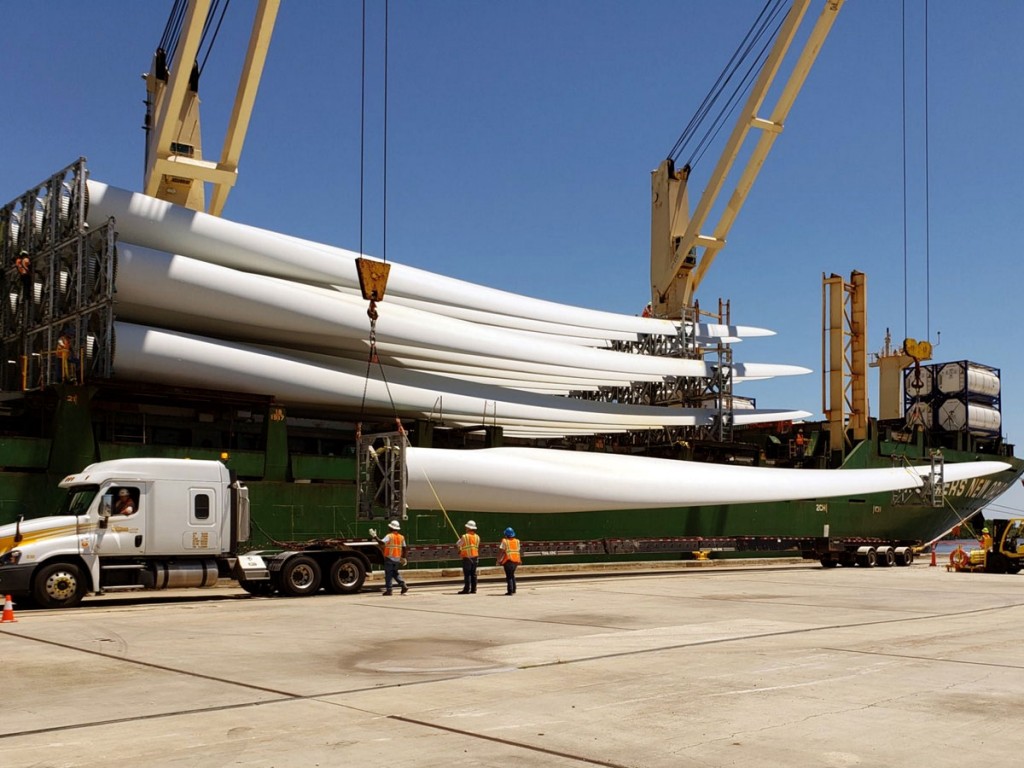
Port of Lake Charles
With rapid recovery from direct hits from Hurricane Laura and Hurricane Delta, the Lake Charles Harbor & Terminal District’s resilient Port of Lake Charles is handling burgeoning volumes of overdimensional wind energy components, as well as alumina hydrate, bulk grains and lumber. The port’s number of imported wind energy units handled in 2020 was more than double the amount in 2019.
The hurricanes utterly demolished five custom-made loaders and unloaders, and 80 percent of covered City Docks storage was damaged or destroyed, but port activities suffered relatively little disruption, according to officials of the Southwest Louisiana port, which encompasses 203 square miles along the Calcasieu River Ship Channel. It is situated amidst a proliferation of multibillion-dollar liquefied natural gas facilities in varying stages of completion, development and planning.
The Port of Lake Charles recently opened a new terminal for export of liquid bulk cargos and is advancing an ongoing program of infrastructure and equipment improvements. In October, port board members approved a contract with John C. Martin Associates and Meyer & Associates Inc. for development of a new strategic plan.
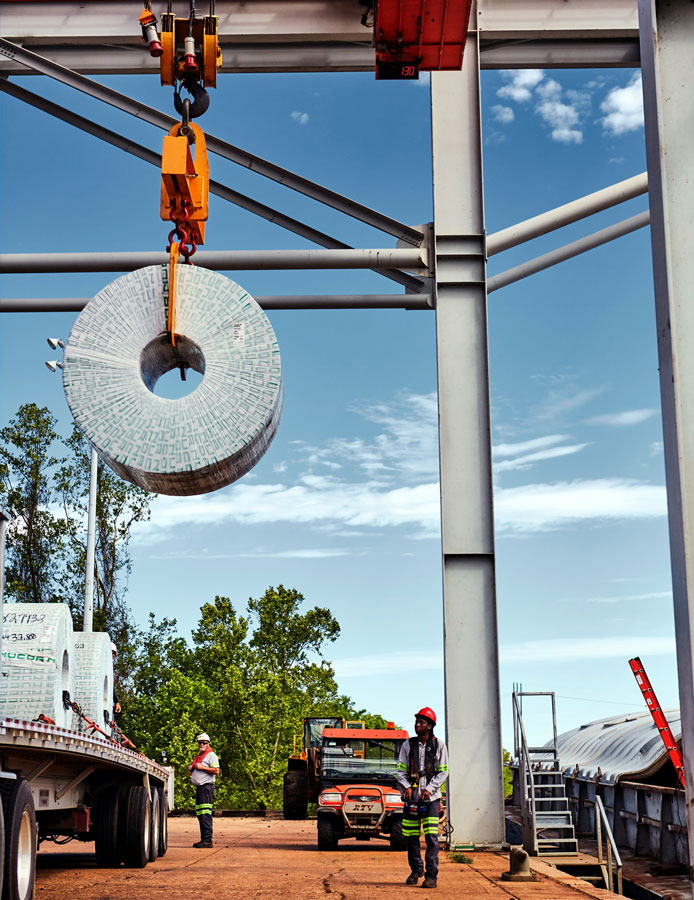
Port of Caddo-Bossier
At the Port of Caddo-Bossier, on the Red River Waterway just south of the northwest Louisiana cities of Shreveport and Bossier City, officials – in an interesting twist – see COVID-19 as driving record volumes of steel imports, as changes in consumer buying habits have sparked demand for construction of e-commerce warehouse and distribution facilities.
Among present priorities at the Port of Caddo-Bossier is the $32.25 million project to build a direct link between the port and Interstate 49. The undertaking, dubbed the I-69 service road, has garnered full funding through several federal, state and regional sources and has moved into the environmental study phase, with sights set on bringing the two-lane roadway to fruition within the coming five years. Those in the region having committed funds for the project include the Northwest Louisiana Council of Governments, the port commission, DeSoto and Caddo parishes, and Bossier City.
The port is currently engaged in a broader expansion initiative to attract additional commerce to Caddo and Bossier parishes, with 18 sites comprising a total of approximately 10,000 acres having been identified as viable locations.





